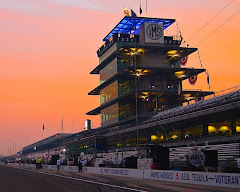
Therefore, it would seem to follow that Franchitti should be a huge racing star in the United States. However, attendance and television ratings appear to indicate that he is not.
You've only just begun!
Roggespierre
A Citizens' IndyCar Republic: Fell the House of France!


"...the job, not the customer, is the fundamental unit of analysis for the marketer who hopes to develop a product that consumers will buy." - Prof. Clayton Christensen, Harvard Business SchoolFew consumers are buying the IndyCar racing product. I would suggest that the core problem is that the IRL has no clue about the "job" that prospective racing consumers want to get done.
"With few exceptions, every job people need or want to do has a social, functional, and emotional dimension."This insight is extremely important. The IndyCar product is the brainchild of IRL Racing Operations Division President Brian Barnhart. The former racing mechanic possesses significant expertise with regard to the functional aspects of the product. One suspects that the social and emotional product dimensions might sound to Barnhart like so much gobbledygook.

On Other Drivers Sharing in the Attention that Danica GetsTranslation: I Can't Sell these Guys
"We have our three points leaders going to Miami Tuesday because they have earned it. We have had stability in our name drivers and it is up to PR to shed the light on those that deserve it. Ryan Briscoe is a really fair guy and a phenomenal race car driver. He is really unbelievable." - Terry Angstadt

 "Dario is not a fan of Chicagoland. Questioners
"Dario is not a fan of Chicagoland. Questioners Dario Franchitti and Scott Dixon are two of the biggest stars in IndyCar. Unfortunately, in the greater sports entertainment marketplace, they are not stars at all. IndyCar is not a competitive product, and one reason is that Franchitti and Dixon are not competitive with Tony Stewart and Jimmie Johnson, Tiger Woods and Phil Mickelson, Venus and Serena Williams, and so on.
Dario Franchitti and Scott Dixon are two of the biggest stars in IndyCar. Unfortunately, in the greater sports entertainment marketplace, they are not stars at all. IndyCar is not a competitive product, and one reason is that Franchitti and Dixon are not competitive with Tony Stewart and Jimmie Johnson, Tiger Woods and Phil Mickelson, Venus and Serena Williams, and so on.Franchitti and Dixon are talented racing drivers who have been rejected in the marketplace. If they and other top IndyCar drivers and teams were attracting fans in droves, then the Committee of Public Safety would advise IRL management to keep them happy. But that is not the case.
Would the IndyCar racing product become less competitive if Franchitti and Dixon were replaced by Paul Tracy and Buddy Rice? Casey Mears and A.J. Allmendinger? A.J. Foyt IV and Al Unser III?
TV ratings were better and attendance was similar when Greg Ray and Scott Sharp were the stars. The product was therefore more competitive in the marketplace despite the presence of CART, an entrenched and well capitalized direct competitor that no longer exists.
Franchitti and Dixon are talented but not valuable. NASCAR (sans-culottes!) has demonstrated where U.S. customer demand for motorsports can be found. The locations include lots of tracks that Franchitti and Dixon probably don't like. Ironically, they also include two road courses, so long as domestic oval racers are doing the driving.
Roggespierre
